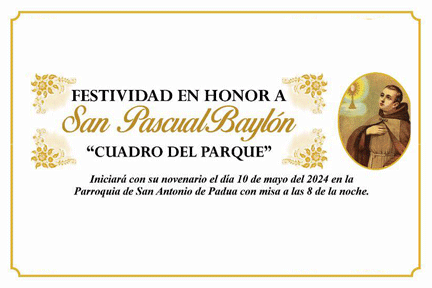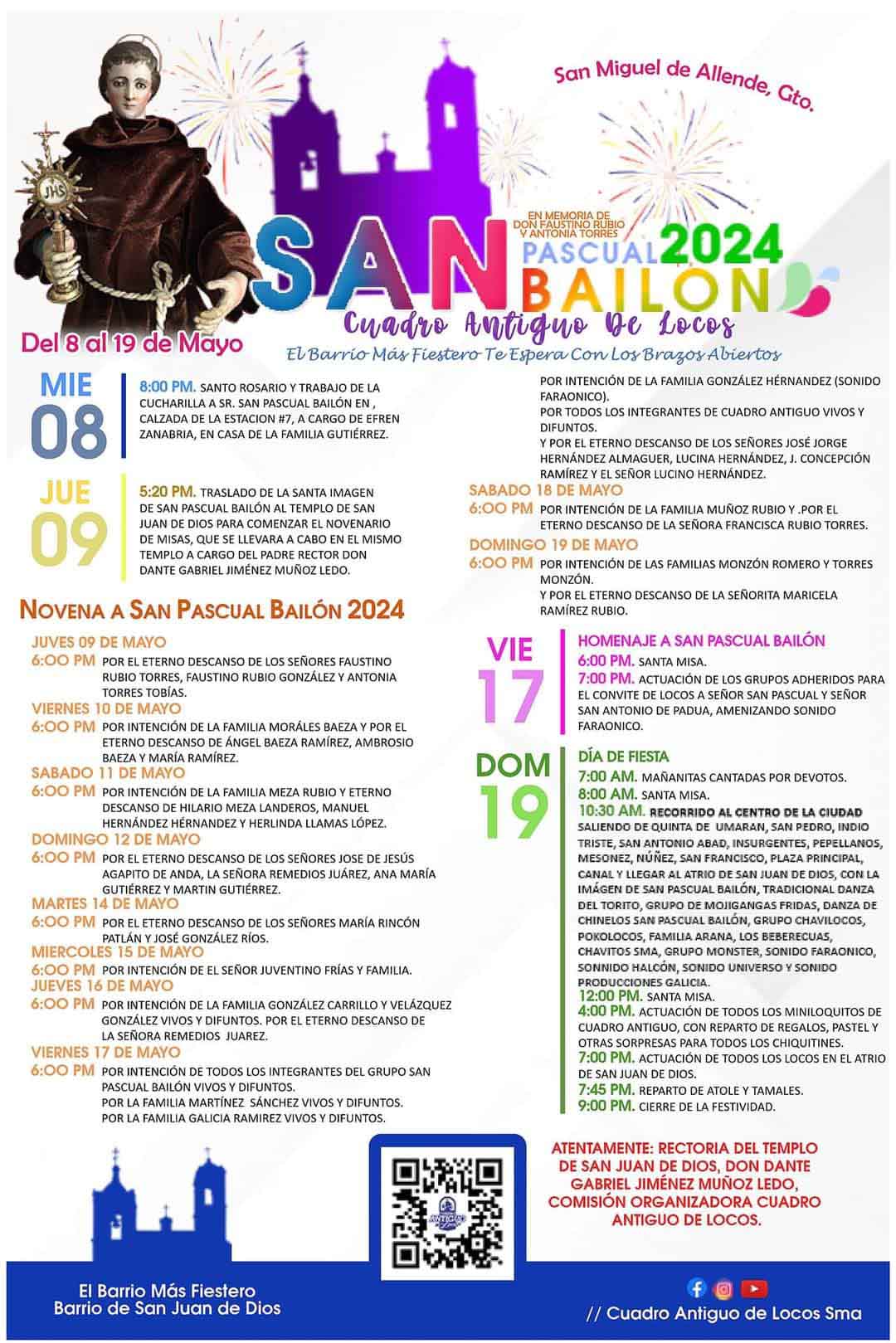Festividad en honor a ‘San Pascual Baylon’ [] Fesival of ‘San Pascual Bailón’
Event Category: All Events, Community Events, Festivals/Fiestas, and Religous/Spiritual
-
Sunday, May 19nd is the Feast of ‘San Pascual Bailón’, the patron saint of the crazies of San Miguel de Allende
Procession in honor of San Pascual Baylon accompanied by floats and locos starting from la Parroquia de San Antonio at 10:00am
Route: Callejon de San Antonio, Ancha de San Antonio, Zacateros, Canal, Hernandez Macias, Insurgentes, Mesones, Nunea, San Francisco, Plaza Principal and returning to la Parroquia de San Antonio
Dancing, food and music in front of San Antonio after the Procession
Mass at 8pm
Saint Pascual Baylon was a 1500’s Spanish friar. Pascual was born on the Feast of Pentecost, hence the name Pascual, a variation of the Spanish word for Pentecost. (The Pentecost is when, after being crucified, Jesus returns to give the Apostles the Holy Spirit to guide them on Earth.) Baylon is derived from the Spanish word for dancing.
Legend states Pascual, while serving in Mexico, invented mole in order to stretch the meal he prepared when visiting friars unexpectedly arrived. He is also the patron saint of cooks and featured in most kitchens around town. His image is a reminder that Pascual’s last name means dance and that to do a cha cha or tango while cooking is a prayer to make the meal you are working on taste better.
Pascual was of grand importance in early San Miguel as his feast day occurred at what was then, the end of the rainy season in mid-May. Special dances honoring green vegetables are still performed. Women raise up a basket of fruit symbolizing how women raise up their spouses.
Also the orchards around town were blessed prior to harvesting the now ripe fruit. Orchards were once plentiful in San Miguel including the areas that today are known as Parque Juarez, del Obraje, San Juan de Dios and La Aldea. All areas then populated by the indigenous population while centro was reserved for the Spanish.
By Joseph Toone

-
-





